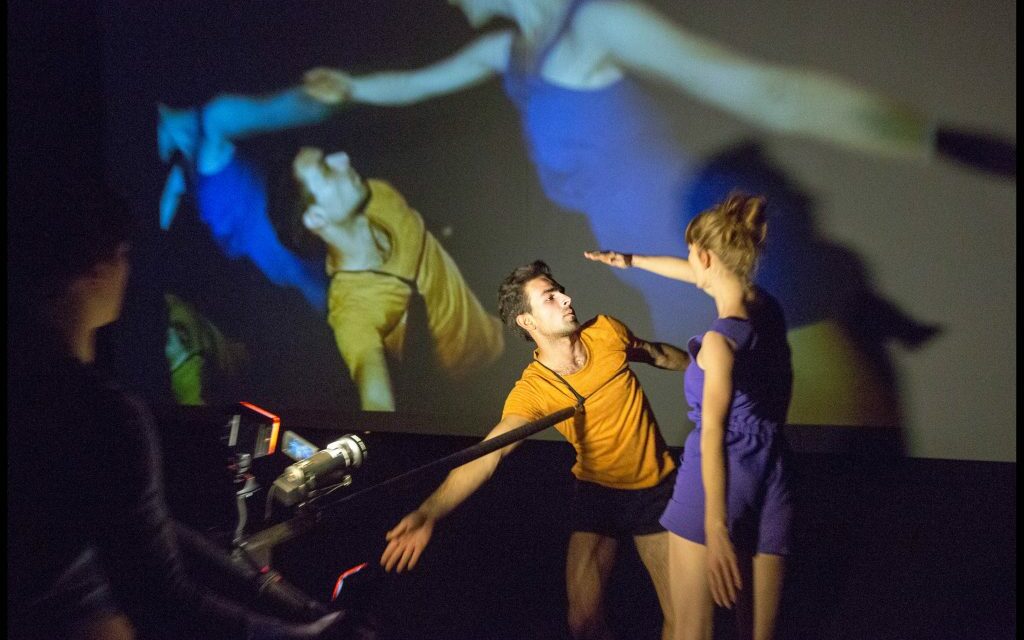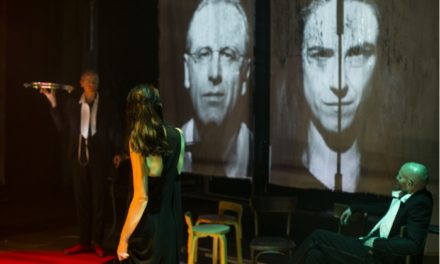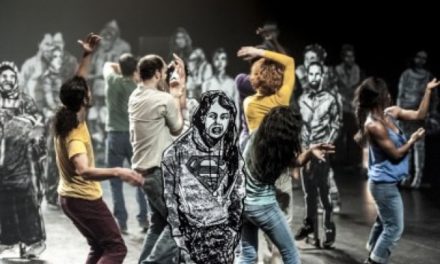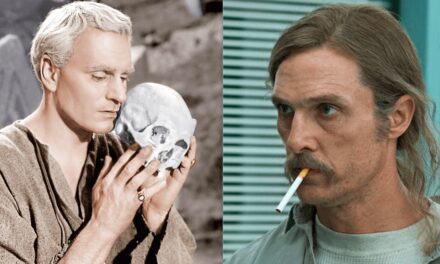Defined as “a place to observe” The Theatron (theatre) has been an experimental platform for optical technologies, and, more recently, for cameras and projection devices. Integrating live video on the contemporary stage not only facilitates the actor’s performance, it often functions as an extension of vision – opening up multiple perspectives by introducing cinematic principles of framing, montage and different dimensions of time and space. This paper will discuss the role of the video camera as an object of inquiry. Through an analysis of experimental performances by young Brussels-based media and performance artists, I will demonstrate how the status of the performer and his/her relation to the camera radically shifts when enhanced by the use of live video; From an actor embodying a character to a lecturer-performer, dissecting the apparatus of vision.
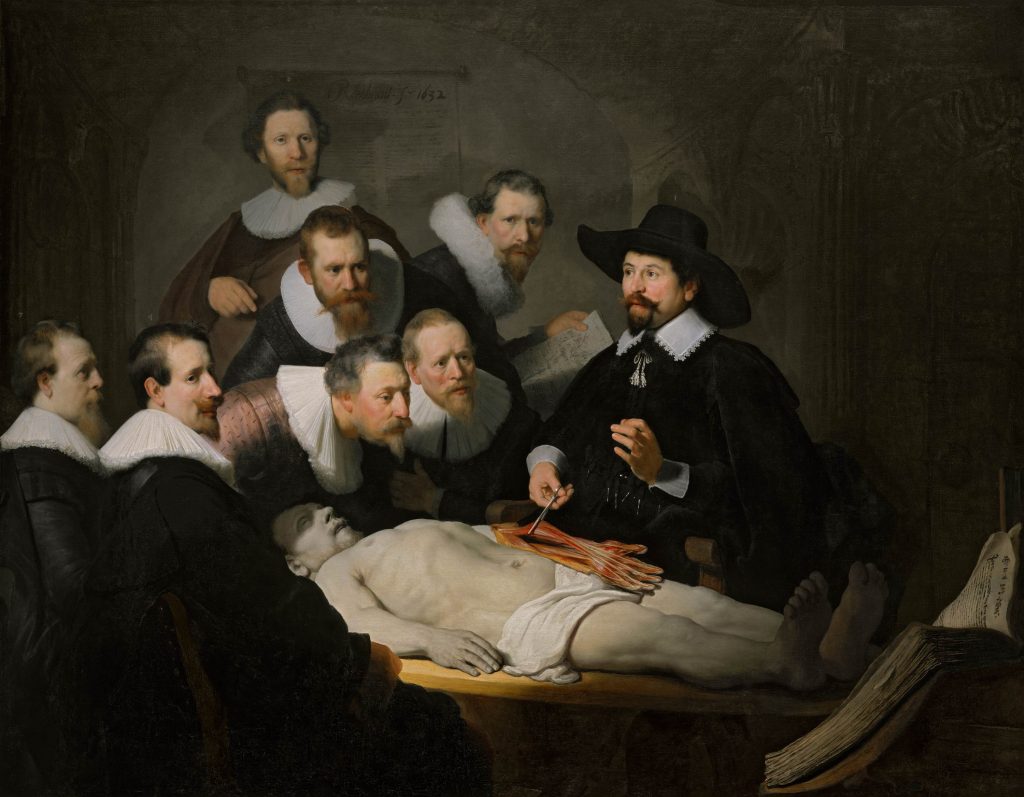
The Anatomy Lesson of Dr. Tulp (1632), Painting by Rembrandt van Rijn (1606-1669), Oil on Canvas, Koninklijk Kabinet van Schilderijen Mauritshuis, The Hague.
The camera in the work of the artists whose practices I will chart is no longer a medium for the actor’s play but becomes the objective itself. Theatres become laboratories for exploring regimes of seeing. In a setting reminiscent of The Anatomy Lesson (one of the original sites (paintings) for the construction of modern spectatorship (1632), Julien Maire dissects and amputates cameras and other optical machines in Open Core in 2009. With Point of View in 2013, choreography for dancers, cameras and projection, Benjamin Vandewalle explores questions of kaleidoscopic perception, movement, and distinctive simultaneous viewpoints. With this renewed interest in visuality, these artists explore the potential and limits of perception, thereby examining how ‘seeing’ functions in today’s mediatized environment. At the same time, I shall argue how these performances continue a tradition of scientific inquiry (Théâtre Scientifique), which traditionally tended to make a spectacle of its own experiments.
Bodies Confronted by Technologies
The opening scene of Point of View is a performance by choreographer Benjamin Vandewalle, showing a dancer attached to an apparatus manipulated by another dancer. With black tape and belts, his chest is connected to a rod mounted with light spots and handycams. While moving, the dancer is illuminated by the light source connected to his body; he interacts with his own shadow. As he moves, his actions are filmed from this same moving apparatus and are projected on the rear wall. The result is a poetic dialogue between the real body on stage, its shadow, and the virtual representations of that body. When other dancers enter the scene, the whole constellation changes. The obvious relation between body, camera, and the projected image is disrupted. The simultaneous projection of the dancers’ movements from different points of view creates a set of visually disturbing illusions by reframing, turning, doubling and mirroring their bodies. The phenomenological perception of real and virtual bodies intermingles in a kaleidoscopic experience. An online theatre critic aptly described the performance as “a choreographed and live filmed perception experiment.”
It was no coincidence that this performance had its first run after a symposium entitled “The Optics of Art.” The title refers to the central question, which was approached from different angles: how and from what position do we perceive reality, and to what extent does this position define our image of that reality? The International Film Festival in Ghent, and more particularly an exhibition on Belgian physicist Joseph Plateau (1801-1883) provided a setting for exchanges between artists and researchers interested in optical technology, perception, and movement. Joseph Plateau is known for his experimental research on the principles of vision. Early in his career, he organized “physiques amusantes,” or “salon physics” –small séances for a live audience, in which he demonstrated the principles of optical illusions via his demonstration apparatus. Plateau’s legacy as a visionary scientist was the starting point for “The Optics of Art” symposium. It brought contemporary media and performance artists Benjamin Vandewalle, Julien Maire, and Sarah Vanagt into dialogue with scholars from theatre studies, history of science, and cognitive neurology to discuss artistic and theoretical results of experiments with optics and technology. The aim was to situate Plateau’s research in optics in a broader context by exploring the relationship between optics and performance. In what follows I will discuss how the role of these artists radically shifts from being an actor confronted with technology to being a lecturer-performer – exploring and questioning the apparatus of vision.
The Role of the Camera
Vandewalle’s Point of View is a good example of how the integration of live video on stage “opens up a multiplicity of perspectives” – as Marvin Carlson puts it – a variety of ways of seeing that “never coalesce into a unified vision.” With this choreography for dancers, cameras, and projection, Vandewalle explicitly explores questions of perception, movement. and distinctive simultaneous viewpoints. The audience is challenged by the discrepancy of what one expects to see, and what is actually on display: we witness how the real movements on stage – walking, kneeling, rolling on the floor – turn into projected images of that same dancing body as if it were flying, floating, falling. Inevitably one starts doubting his own perception. How can a body stand still and move at the same time?
The extensive use of analog and digital media on stage such as film, live video, microphones, and computer programs to disrupt, fragment and refract the text and bodies of “characters” has become a characterizing feature of contemporary theatre and performance. Back in 1999, Hans-Thies Lehmann identified the “caesura of the media society” as one of the most crucial contexts for what has since been called the “post-dramatic turn” in theatre. In his famous work, Lehmann roughly distinguishes between different modes of media use. In one scenario, media are occasionally used, without fundamentally defining the theatrical conception. In such cases, media have a mere functional role. Or in a second mode, its aesthetic or form serves as a source of inspiration for theatre, without the media technology playing a major role in the production itself. Vandewalle’s previous performance One / Zero in 2011 is a good example. With visual artist Erki De Vries, he experimented with the aesthetic codes of cinema. The basic principle is that of ‘stop-motion’: different images are displayed one after another, each time interrupted by a moment of complete darkness. The cinematic movement is indefinitely delayed. “It’s like a dance, but without seeing the movement” Vandewalle points out; “each of us has to compile the movement from the individual still images.” Finally, the Wooster Group’s high-tech, intermedia aesthetics is one of Lehmann’s favorite examples of a third mode – in which media are constitutive of certain forms of theatre. Vandewalle’s Point of View also belongs to this category.
However, I would like to discuss another mode unmentioned by Lehmann – the mode in which media and more particularly the camera, becomes a central object of investigation. This is the case in the work of Benjamin Vandewalle, Julien Maire and Sarah Vanagt, who share a remarkable interest in the tension between the “old” (or obsolete) and a new optical media, and the way visual technology articulates inquiries into optics, cognition, and visuality. The camera in the practice of these artists is not a medium for the actor’s play but becomes the objective itself. Their theatres are laboratories for exploring what Jonathan Crary has called “regimes of seeing”; to investigate how ‘seeing’ works in today’s mediatized environment. In that sense, these performances continue a scientific tradition of optical inquiry, which traditionally tended to make a spectacle of its own experiments: Théâtre Scientifique or Physique Amusante. In nineteenth-century Paris and London, the theatre was a popular venue to demonstrate optical science in spectacular ways.
Dissecting Technology in the Anatomy Theatre
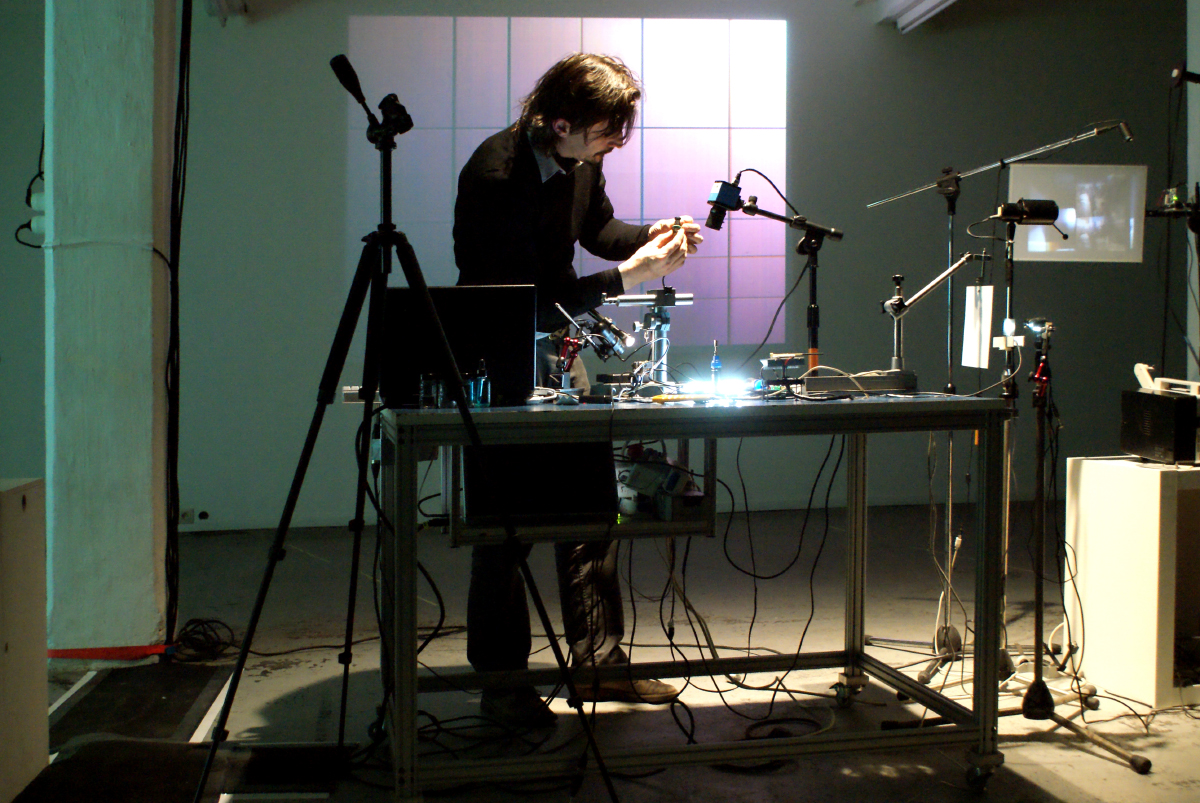
Open Core, 2009, Directed by Julien Maire. Photo Credit: Marc Wathieu.
Media artist Julien Maire is inspired by earlier examples of science on theatrical display. He often performs as a surgeon or anatomist, dissecting and amputating cameras and other optical machines like magic lanterns, slide projectors, and webcams. His dramaturgic setting is reminiscent of The Anatomy lesson, one of the early sites where modern spectatorship was. Manipulations of the slide-projector for the 2002 production Demi-Pas, and the camera in Exploding Camera in 2007, or Open Core in 2009 do not simply function as a poetic deconstruction of image-making technology. These performative installations function, in the words of Edwin Carels as “a laboratory to do research on our cognitive responses to an image.” These investigations result in original prototypes. As hybrids between media-archaeology, and new (digital) technological constellations, he produces new visual experiences.
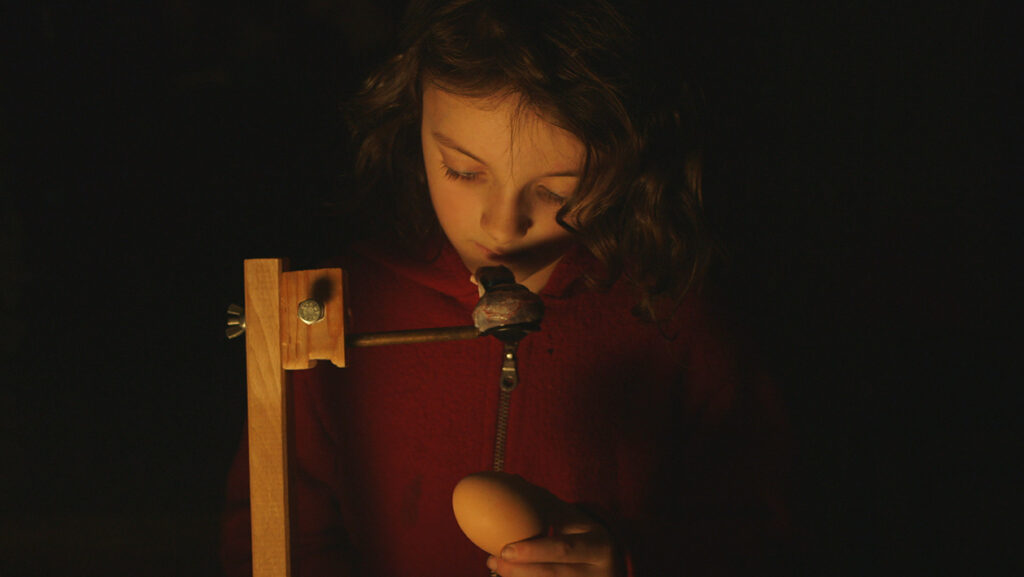
In Waking Hours A short film by Sarah Vanagt and Katrien Vanagt, 2015. film still by Balthasar.
Sarah and Katrien Vanagt share this fascination with anatomical dissection and the origin of the image; especially, in their contemporary rereading of historical theories of vision and the workings of the eye. Based on the Latin writings of the physician Plempius from 1632, they experimented with a ‘camera obscura’ and the eye of a freshly slaughtered cow as a lens. More particularly in his 1632 Ophthalmographia (A treatise of the eye), Plempius emphasizes that anyone may carry out this experiment at home “demanding little effort and expense.” Plempius moreover describes how the cow’s eye “in the darkened room” allows the experimenter to see “behind the eye […] a painting that perfectly represents all objects from the outside world.” In the short film In Waking Hours (2015), we see historian Katrien Vanagt as a twenty-first-century disciple of Plempius. Filmmaker Sarah Vanagt captures how this modern “Plempia” meticulously follows her teacher’s instructions. For the occasion of a symposium in Brussels, Katrien Vanagt re-enacted the experiments described by Plempius live in an anatomy theatre setting; After dissecting the animal’s eye, the audience could witness the birth of the image upon the eye.
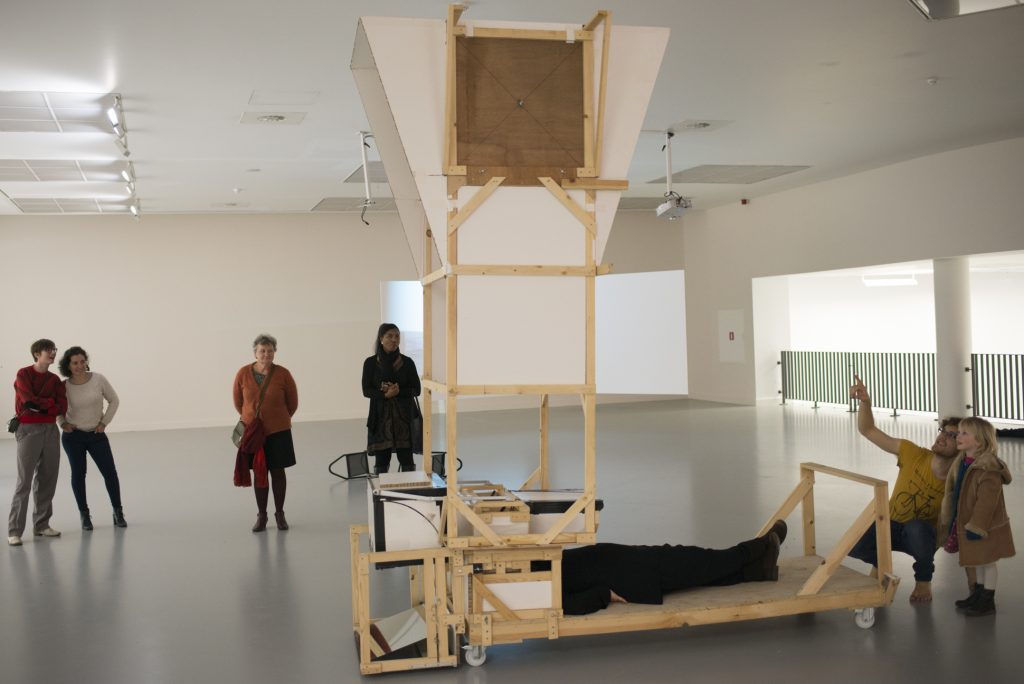
PERi-SPHERE, Directed by Benjamin Vandewalle, 2015. photo credit: Bram Goots.
In a similar vein, we can understand Vandewalle’s Point of View as an optical experiment. By playing with and manipulating the classical viewing mechanism (dispositive), he emphasizes the artificiality of our perception “that is always constructed or mediated.” His latest creation PERi-SPHERE in 2015 illustrates my argument. PERi-SPHERE is a small performative installation using a periscope: An instrument for observing from a concealed position. It was mainly used for military purposes, to look without risk from bunkers, trenches, tanks, and submarines. Vandewalle developed an analog version of this same idea, describing it as a performative object in which the viewer is immediately involved in the process of looking. The viewer is placed inside the apparatus, giving him a viewing position from within the technology. The apparatus, in this case, does not merely function as an extension of the eye, as an analog translation of the viewer’s point of vision. Instead, the periscope provides an image of the immediate environment, but from a different point of view. What one sees is thus disconnected from the viewer’s exact physical position.
Scientific Theatre
Optics has always been a central interest to both artists and scientists. Renaissance artists adopted the geometry of linear perspective and Greek optics in general. But they were equally interested in the qualities of reflected and refracted light on different materials. Historians of science have studied how pictorial artists transformed scientific knowledge of the physics of light, and how treatises on perspective offered general theories of perception. The nineteenth-century saw an increasing scientific interest in the relationship between optics, vision, and perception. Optical illusions were considered an interesting means to study how the brain processed information. One result of the scientific work undertaken in this field was the creation of a number of optical toys specifically designed to trick the mind.
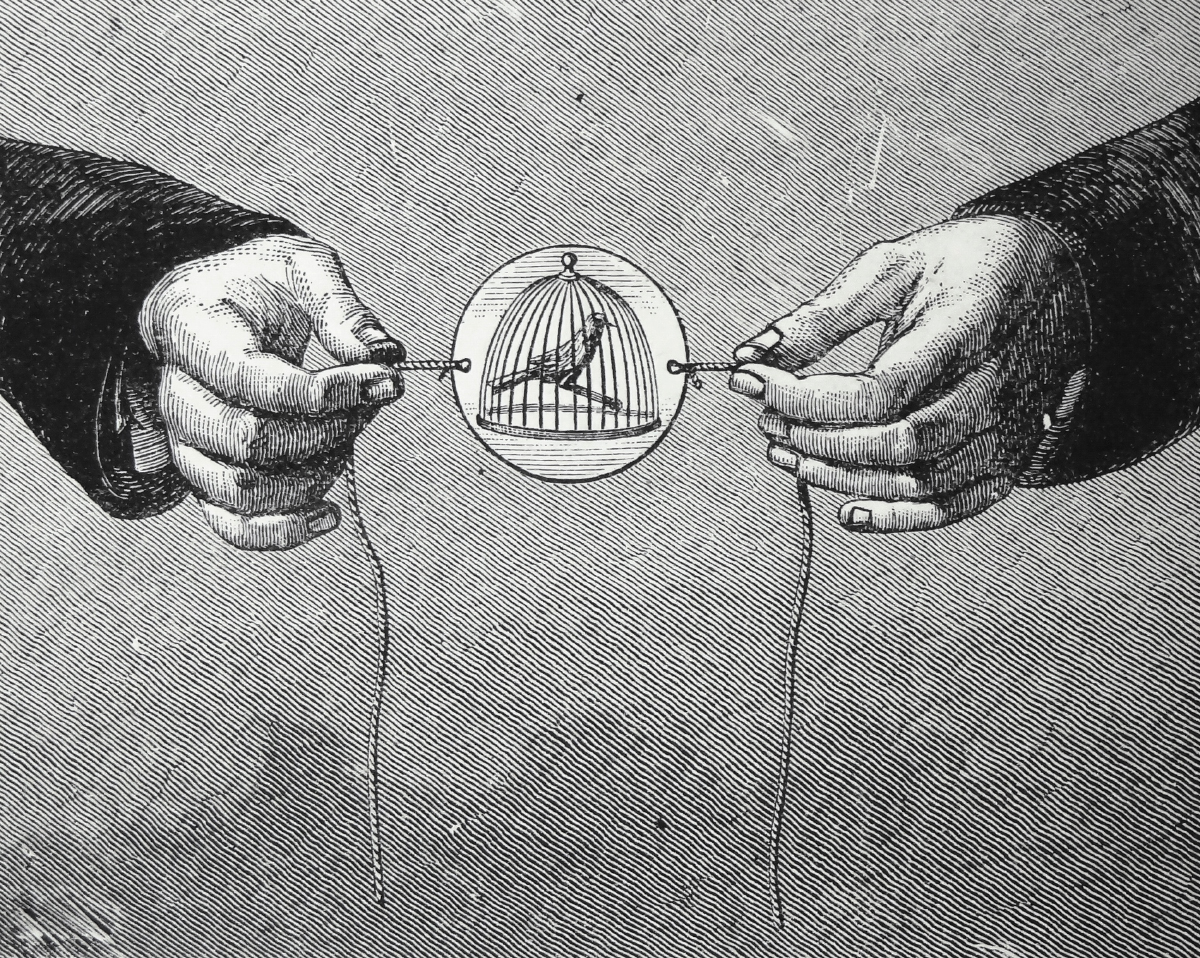
The Thaumatrope in Rotation. From Popular Scientific Recreations by Gaston Tissandier (ca. 1890).
In 1827, physician John Ayrton Paris wrote a scientific book for children which contains the first description of the principle of a scientific toy called “The Thaumatrope”: A disk of cardboard with a picture on each side is attached to two pieces of string. When the strings are twirled quickly between the fingers the two faces of the disc appear to blend into one picture. This phenomenon was known as “the persistence of vision.” It was believed that a visual impression persists on the retina (though it is actually in the brain) for a brief interval. In 1832, scientists Joseph Plateau in Belgium, and Simon Stampfer in Austria simultaneously and independently further explored this playful visual illusion, based on the Faraday wheel effect. They created “the first true moving picture toy.” Their inventions were commercialized under the name of “phantasmascope” (and later “fantascope”) in London, and the “Stroboskop” in Vienna.
The thaumatrope, phantasmascope, and the Stroboskop are beautiful examples of what has since been called “philosophical toys.” The term refers to a variety of optical toys, kinetic toys, and jouets séditieux, originating in the early nineteenth century. These instruments enabled the experimental study of natural phenomena concerning vision, but they provided amusement too. They were found to have a popular as well as a scientific attraction; challenging the boundaries of science, arts and popular culture, in between theory and practice, knowledge and amusement. Especially in the context of visual science, philosophical toys reflected the emergence of science as an experimental discipline. The toys’ scientific impact was dramatic, echoing their popular appeal.
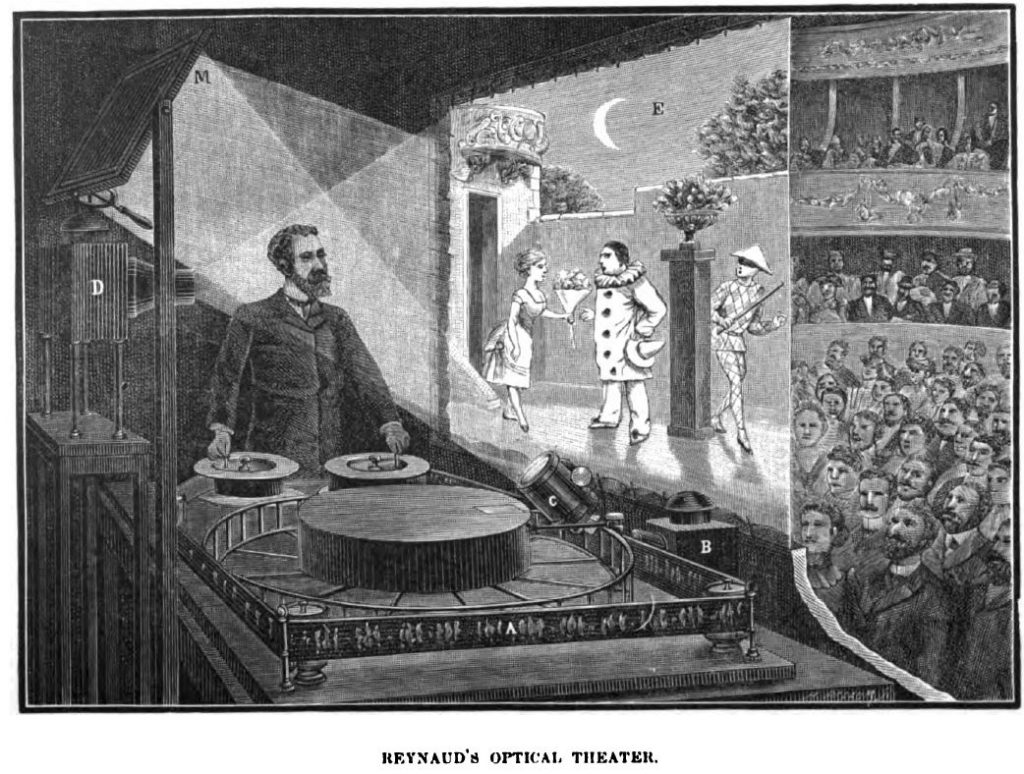
First public performance of Reynaud’s Théâtre Optique in Paris, 1892, published in “La Nature” issue of 23 July 1892.
Optical media and their magical visual effects easily found their way into the theatre. A beautiful example of this interchange between scientific developments and artistic and popular pursuits in the 19th century is Emile Reynaud’s Théâtre Optique. After reading an article entitled “La vision et ses illusions d’optique” (1870) in the magazine La Nature, Reynaud decided to refine Plateau’s stroboscopic disc. The former assistant of Abbe Moigno (an important popularizer of science) developed the praxinoscope-théâtre. This “Lilliputian theatre” was based on the praxinoscope: device to obtain the illusion of movement with the aid of moving mirrors,” as the title of his 1877 patent reads. A few years later, he perfected the projecting praxinoscope into what has become known as the Théâtre Optique. With this catoptric theatre, Reynaud presented a show of “Pantomimes Lumineuses” at the Musée Grevin in Paris. The well-known engraving of the event was published in the scientific journal La Nature, illustrating the optical illusion at play.
Media Archaeology
In the past, experimental science and aesthetics shared many fundamental concerns. Making the invisible visible (or rather, making the imperceptible perceptible) by some sort of mediation is one of them. In examining the role of optical technology in contemporary performance and media art, my viewpoint will be to see them as theatres of science – as experimental platforms for measuring and qualifying the impact of these technologies on cognitive perception. Their optical instruments are objects in which scientific and aesthetic approaches intersect and overlap. This is why I propose to consider the role of the camera in these contemporary performances as compared to the potential ascribed to modern philosophical toys. The performances’ embedded technology as engines of the imaginary, to collect, conserve and reveal foundational conceptions of vision and cognition. The role of a performer thus shifts from an actor embodying a character, enhanced by the use of live video, to a lecture-performer; he or she becomes a media archaeologist who excavates old or extinct media and then becomes a surgeon who dissects and analyzes the apparatuses of vision.
In considering contemporary performance and media artists as media archaeologists and their technologies as philosophical toys, my approach aligns itself with parallel models of historiographical excavation. Looking to Pearson and Shanks’s seminal work on archaeology as an approach to performance studies, we see that archaeology is understood less as the discovery of the past than as the establishment of an active relationship with what is left of the past. Rather than treating archaeological remains as representative tokens of a past now fragmented and to be conserved, the authors stress the return of the past in the present, but in a different guise. Similarly, media archaeology is understood by scholars as a way to prise media history from the prevailing capitalist and teleological logic of technological progress. This emerging sub-field of media research is considered as an approach in academic research as well as in artistic practice. It does not offer a clear-cut methodology but is necessarily a “traveling discipline” to use Mieke Bal’s phrase. Media archaeologists use multiple sources and diverse methods, but share a common rejection of dominant teleological accounts of media and technological history.
Old or outdated technologies have undeniably a playful, childlike attraction. Which, can even result in techno-fetishism. However, by playing with optical instruments, contemporary artists not only revitalize their fascinating and magical appeal, but they also illuminate the present through the past and open up reflections on optics, media, and cognition today. In her essay, The Dream Life of Technology, media artist Zoe Beloff described how through the computer she can make connections not just in theory but in practice “between the birth of technologies of the past in relation to the media revolution of the present.” She also describes the subject of her work as something that “operates in a playful spirit of philosophical inquiry.” In his 1987 account on “Scientific Toys,” science historian Gerard L’Estrange Turner addresses Homo-Ludens as “a fundamental but often overlooked aspect when considering how human beings acquire knowledge.” The way in which yesterday’s science so often becomes today’s recreation does not make it any less scientific. Indeed, much scientific (and other) knowledge is absorbed consciously or unconsciously through play.
Philosophical toys give us a glimpse into the way our cognitive system works; creating dynamic experimental spaces within which knowledge and perception are processed and constituted. The spectators of philosophical toys are entertained. At the same time, they actively participate in the process and engage in quasi-scientific experimental instruction. Borrowing again from Beloff, the philosophical toy is an object “to think with.” In the traditional magic trick, the illusion remains mysterious because the magician keeps the secret close. But the philosophical toy has the potential to entertain and at the same time explore, expose and problematize questions about technology and perception.
In the scientific theatres of Vandewalle, Maire, and Vanagt. the focus becomes the viewing subject as it experiences itself in relation to everyday media technology. The theatre situation turns the nature of seeing itself into the object of conscious perception. As live experimenters with visual media, these artists playfully explore the potential, and limits of perception. They are not actors confronted with technology, but lecturer-performers playfully exploring the apparatus of vision. Moreover, the work of this generation of “media-archaeologists” questions the ontological characteristics of the image, and the history of image-making technology. They experimentally explore alternative visual approaches for our contemporary, technology-saturated environment.
This article was originally posted by Archée on October 28, 2019, and has been reposted with permission. To read the original article, click here.
This post was written by the author in their personal capacity.The opinions expressed in this article are the author’s own and do not reflect the view of The Theatre Times, their staff or collaborators.
This post was written by Nele Wynants.
The views expressed here belong to the author and do not necessarily reflect our views and opinions.

